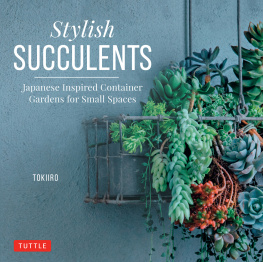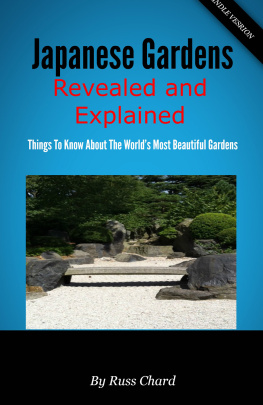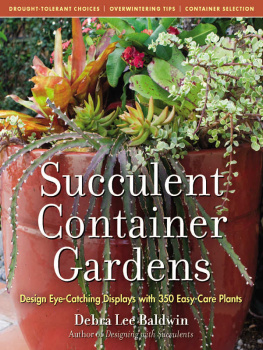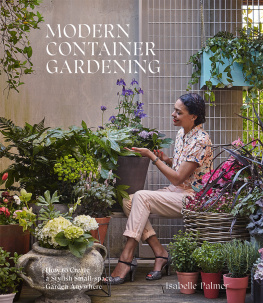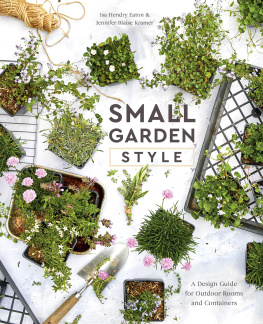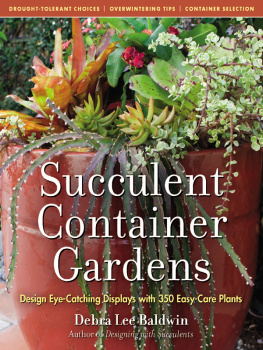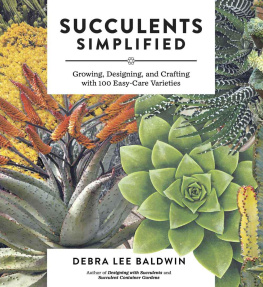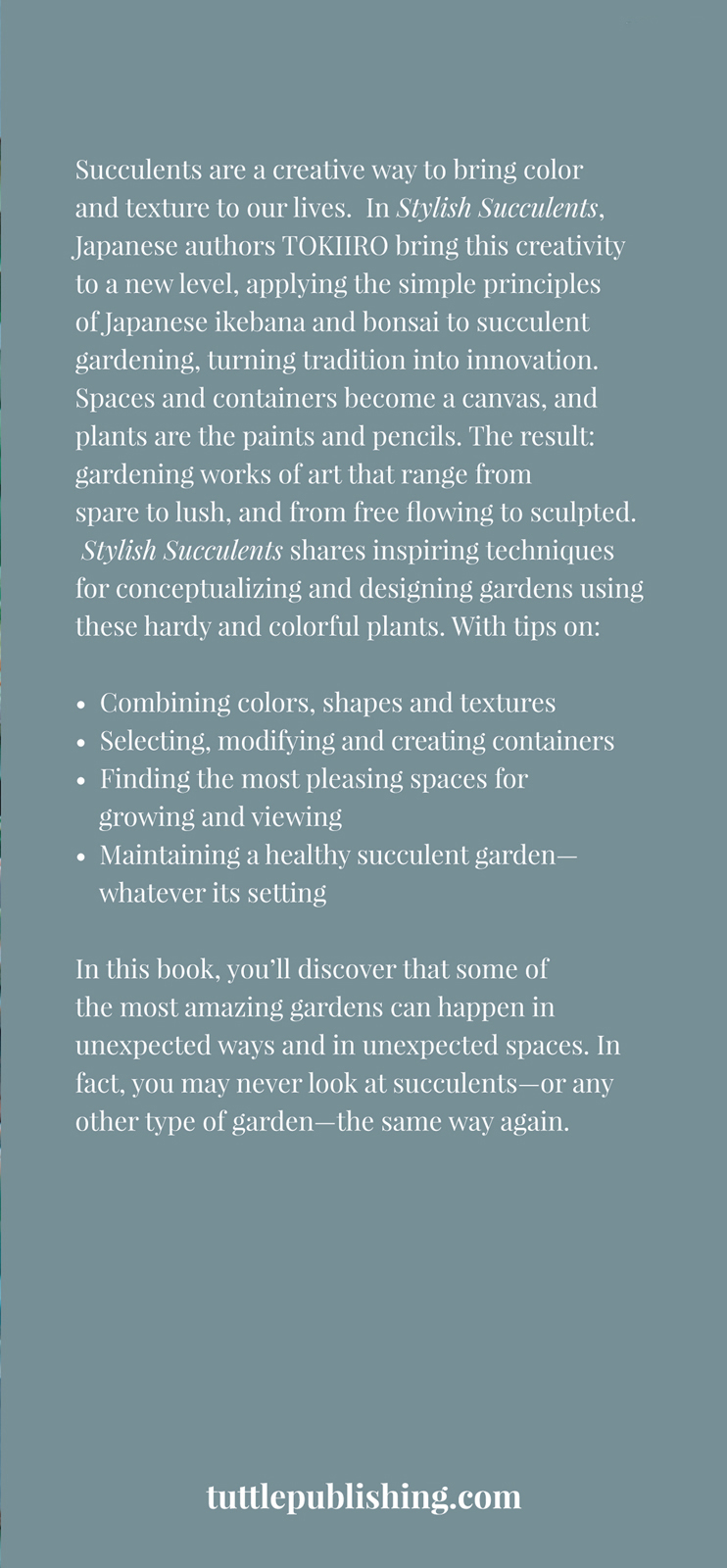
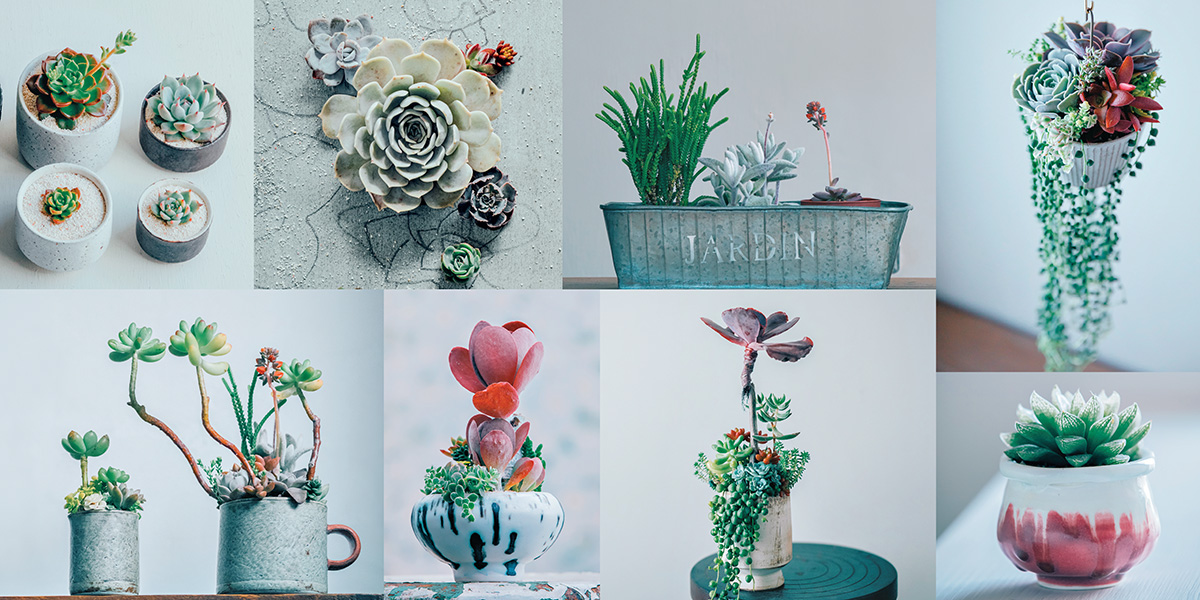
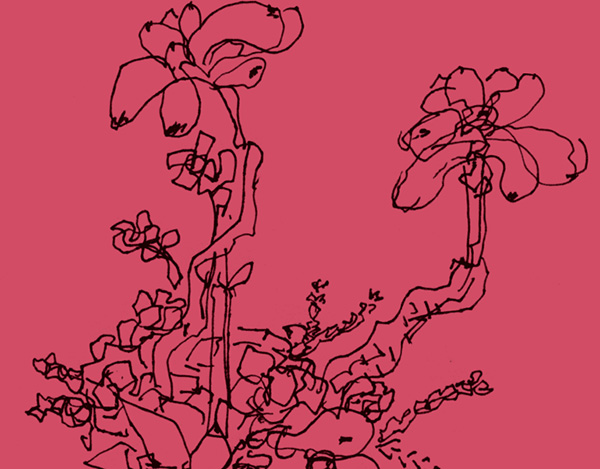
Stylish
SUCCULENTS

Japanese Inspired Container Gardens for Small Spaces
TOKIIRO
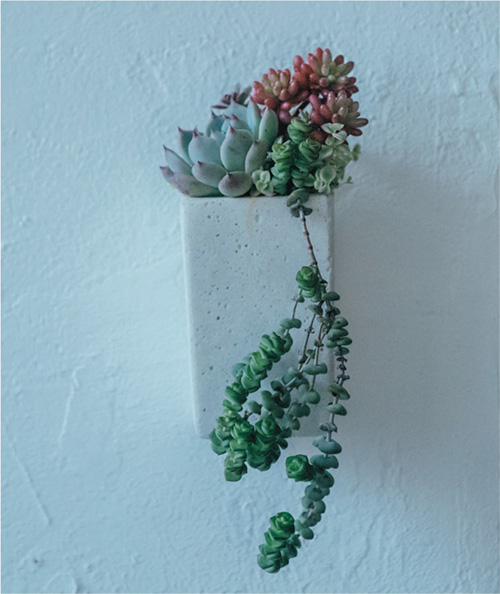

Succulents are Dynamic
Always remember that. The succulent you see now is ever-changinga fleeting image that reflects its current environment. These plants respond to their surroundingstomorrow; the day after; a week, month or year from now, theyll sport a fresh new look. They are never really complete. They are constantly evolving.
At TOKIIRO, we contemplate succulents from every angle so that our arrangements will celebrate the plants transformation over time. They resemble ikebana in the way they conjure up a world unfolding in space, and bonsai in the snapshot of scenery they offer.
For TOKIIRO, a plant container is like a sheet of drawing paper or a canvas. Succulents are the pastels, colored pencils and paints. We plant them as if drawing a picture inspired by a memory in the minds eye, or by the containers small inner space (or outer space). Without the space created by the container, expression is impossible. The variations in the glazes and forms of the pots enhance the individuality of the universes created.
The pencils, paints and pastels that color these container universes arent anything special; theyre simply the materials at hand. In other words, the succulents used arent hard-to-find hybrids; rather, theyre what could be called garden varieties.
The motifs we draw are narrow lanes traversed in country adventures; mountain ranges that rise up above fields; the claw of a crayfish; deep forests in which ponds turn up out of nowhere. Somehow, matched with containers and succulents, these memories and imaginings have become little gardens and forests that evoke warm feelings of nostalgia.
What kind of picture will you paint with succulents?
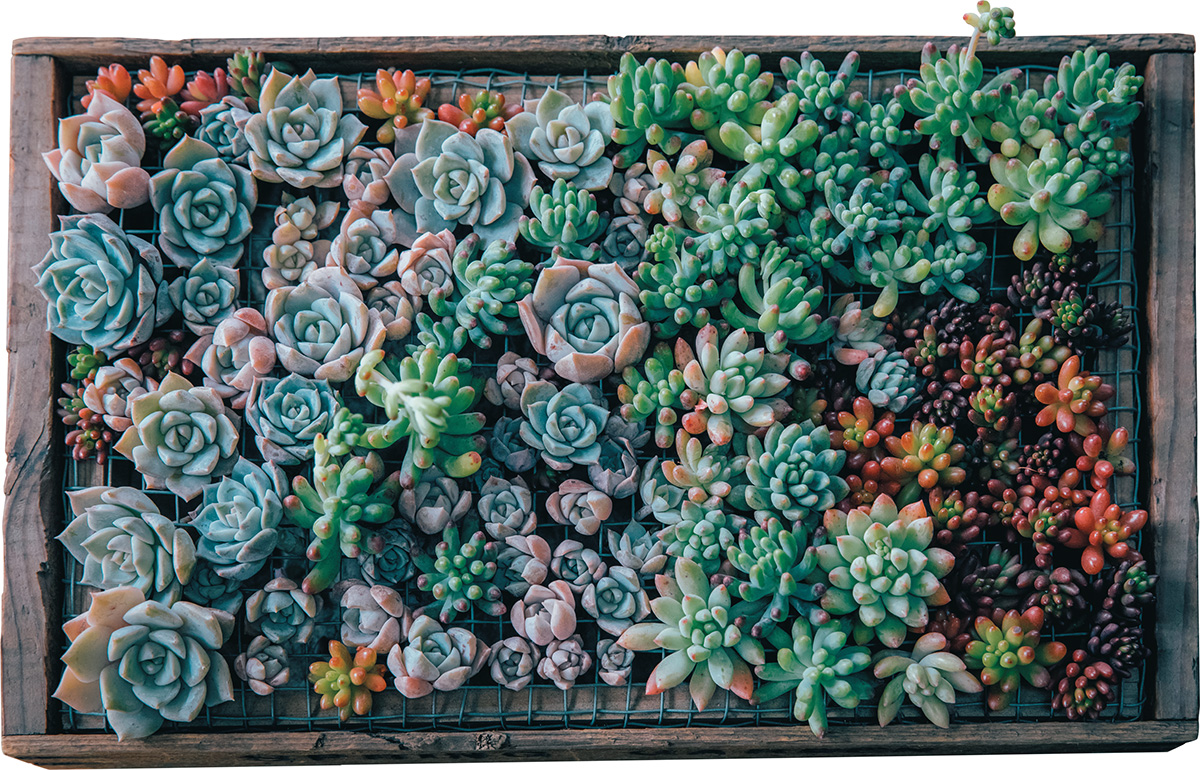
Chapter
A Little Universe in a Pot
Planting Succulents in Containers
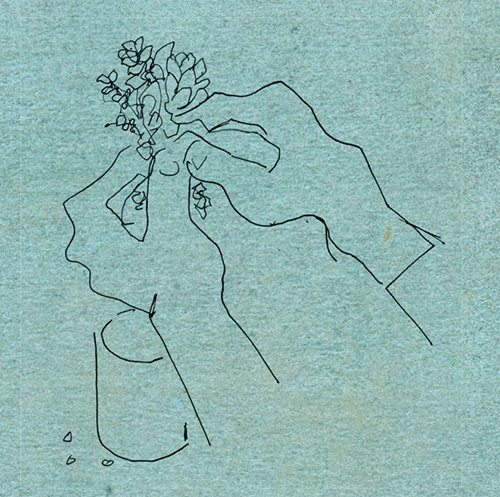
Outer space is free of boundaries. TOKIIRO thinks of plant arrangements in the same way. Because succulents have an incredibly strong life force, by responding to their environments they evolve over time to achieve their unique forms. Each succulent you plant in a little pot evokes a new world that far exceeds human imagination. That new world, too, continues to evolve. In it is a beauty that only time can create. In tiny pots, arrangements of succulents give birth to a world view thousands of times bigger than themselves. Try imagining this view of nature when planting succulents in containers.
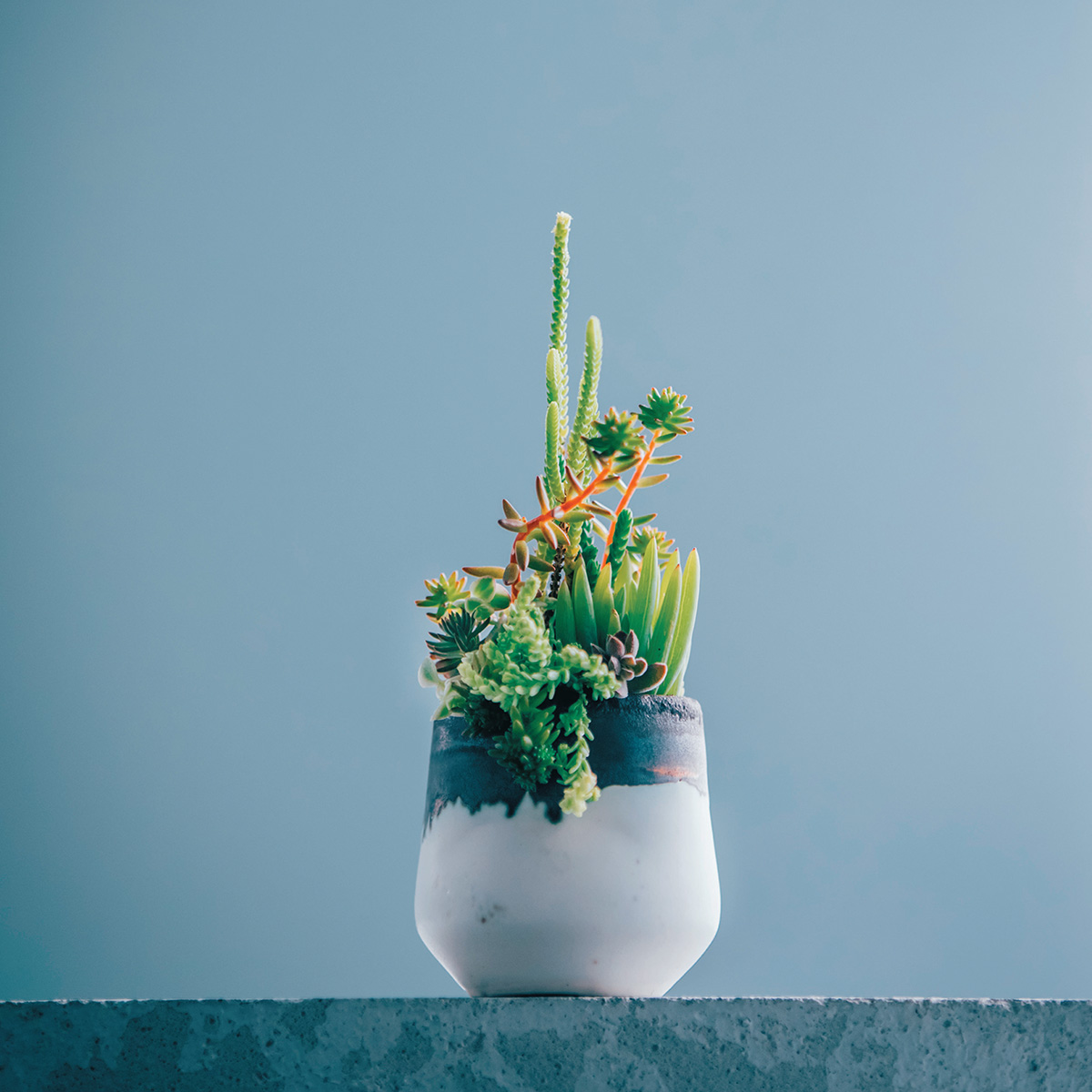
Basic Tools and Materials
Lets begin by talking about the tools youll need to create arrangements of succulents. Theres nothing thats particularly hard to obtainits easy to make a start as these are all items that can be found at home or in a home center.
1 Mesh
Placed over the hole in the base, mesh prevents soil from trickling out of the bottom of the container. Use mesh sold at home centers for security doors, cutting it with scissors to the size of the container base.
2 Container
The flower pot used for arrangements. In order to ensure good drainage, a pot with a hole in the base is recommended. However, as long as watering is carried out correctly, a container without a hole is fine too. There are also ways to make holes in containers (see ).
3 Scissors
Use for cutting mesh to size, trimming succulents and so on. Easy-to-use craft scissors are fine.
4 Tweezers
Useful when planting small succulent sproutings in between gaps. Rather than gardening tweezers, use the type with bent tips intended for detailed work.
5 Spatula
Use to pack soil in firmly in the container. A small version, such as a wooden coffee stir stick, is easy to use as its narrow shape and smoothness are just right.
6 Wire
Bend wire into a U-shape to secure succulents into soil if theyre tall or otherwise unstable. Use 24-gauge florist wire (preferably brown, to blend in with the soil). Florist wire is fairly rust-resistant.
7 Scoop
Use to pour dirt into a container. If creating an arrangement in a coffee cup or small container, a small scoop is handy.
8 Soil
Use soil for succulents which is sold at home centers, gardening stores and so on. Plants in the Crassulaceae family in particular have delicate roots, so use fine soil.
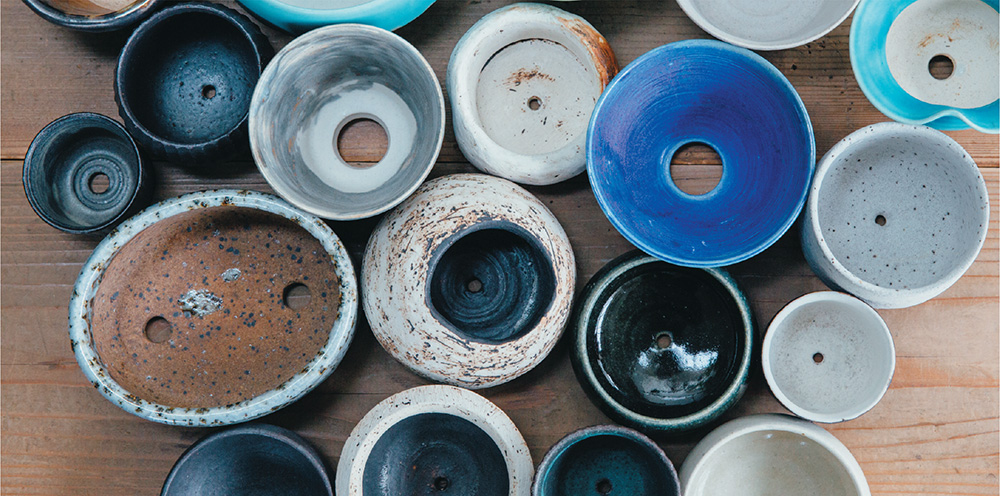
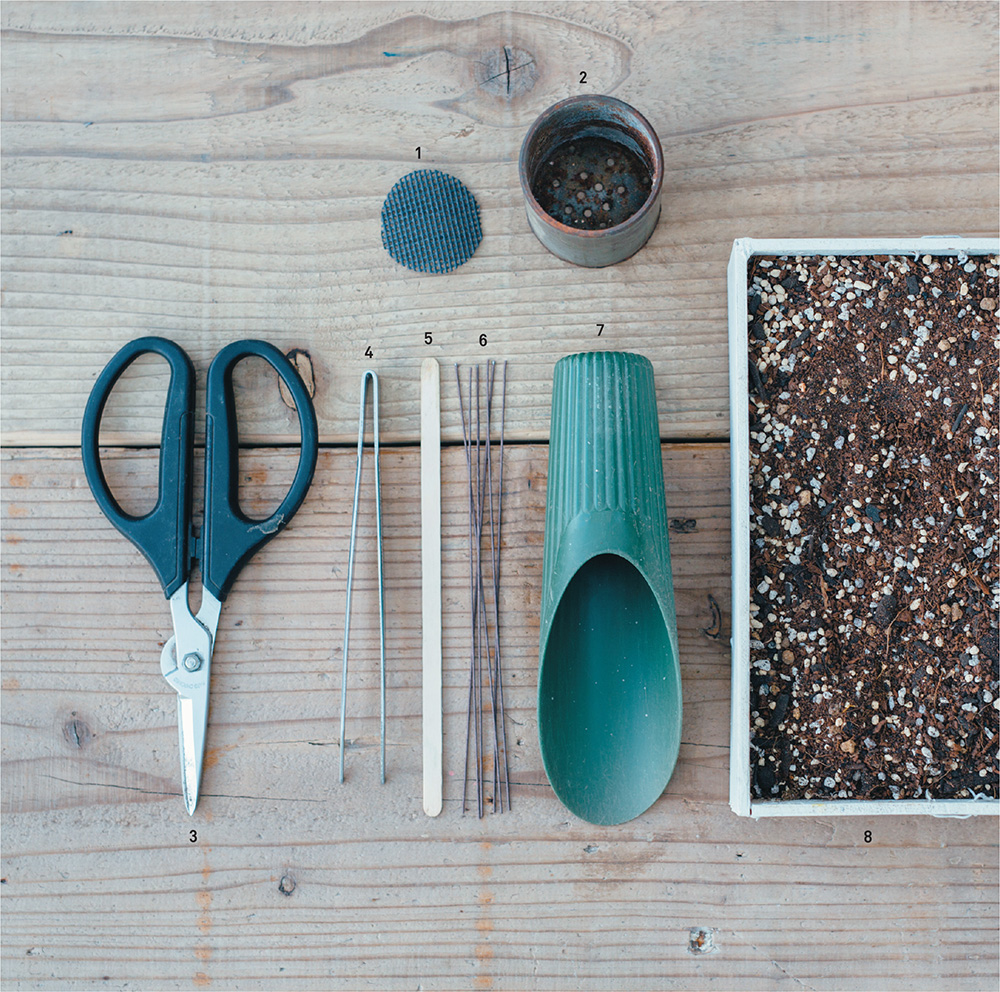
Basic Methods for Planting
1. Prepare the Container
Find a container youd like to use. If the base has a hole, place mesh over it (for containers without holes, see below and ). A small container is pleasing to look at and makes for an easy first arrangement. Try using a coffee cup or other small container that appeals to you to make the finished arrangement all the more charming.
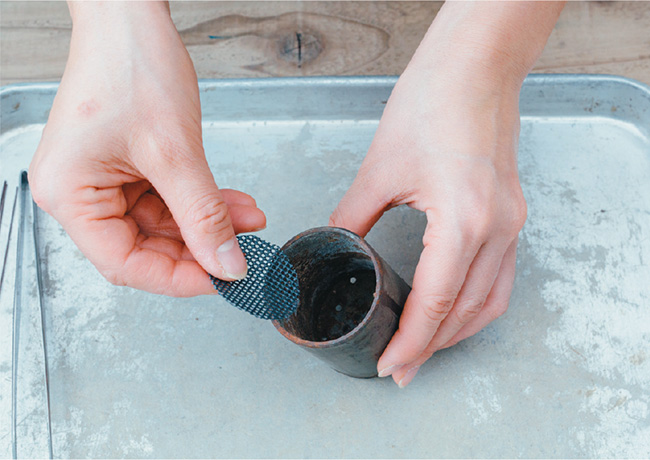
Cut mesh to the size of the container base and place in container.
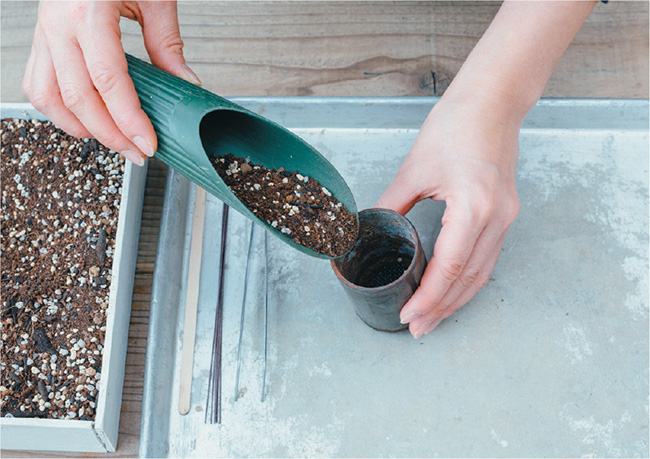
Fill container with soil to about 1/3 of its height.
HOW TO MAKE A HOLE IN A CONTAINER
A container that doesnt have a hole in its base is fine to use as it is, but a hole allows water to drain well, making it easier to create a compatible environment for these plants. Youll need an electric drill. Start with a fine drill bit, monitoring the hole and gradually increasing to thicker bits as you go. If youre using a large container, its better to make several smaller holes rather than one large one.

Start by using an extremely fine bit and drilling from the outside of the container. Change to a thicker drill bit as you go, if necessary. Once the drill seems as if it will break through the surface, turn the container over and drill from the inside. Drill from the outside again to adjust and increase the size of the hole. Depending on the size of the container, make several holes 3/8 inch (1 cm)in diameter. However, if the base of the container is thin, it may crack, so take care and dont drill too many holes.
Next page
